Abstract
Eighty-two chickens purchased at 11 retailers (supplied by 12 wholesalers) in the south of England were cultured for Campylobacter jejuni by a method involving total immersion. The organism was isolated from 22 (48%) of 46 fresh birds, 12 of 12 uneviscerated (New York dressed) birds, but only 1 of 24 frozen birds. Viable counts of up to 1.5 x 10(6)/chicken were obtained from fresh birds and 2.4 x 10(7)/chicken from uneviscerated birds. Surface swabbing of breasts, thighs, wings and vents of fresh chickens showed that contamination was generally distributed over the carcasses. Salmonellas were found in only 2 of 69 of the fresh chickens. The prevalence of several Lior and Penner C. jejuni serogroups was similar in chickens and sporadic human cases of enteritis. Penner serogroup 4 (mostly of Lior serogroup 1) was found in 26% of human isolates and 14% of chicken isolates. The rising incidence of campylobacter enteritis during the last 6 years could well be a reflection of the increasing proportion of fresh chickens consumed over that period (32% higher in 1986 than in 1981).
Full text
PDF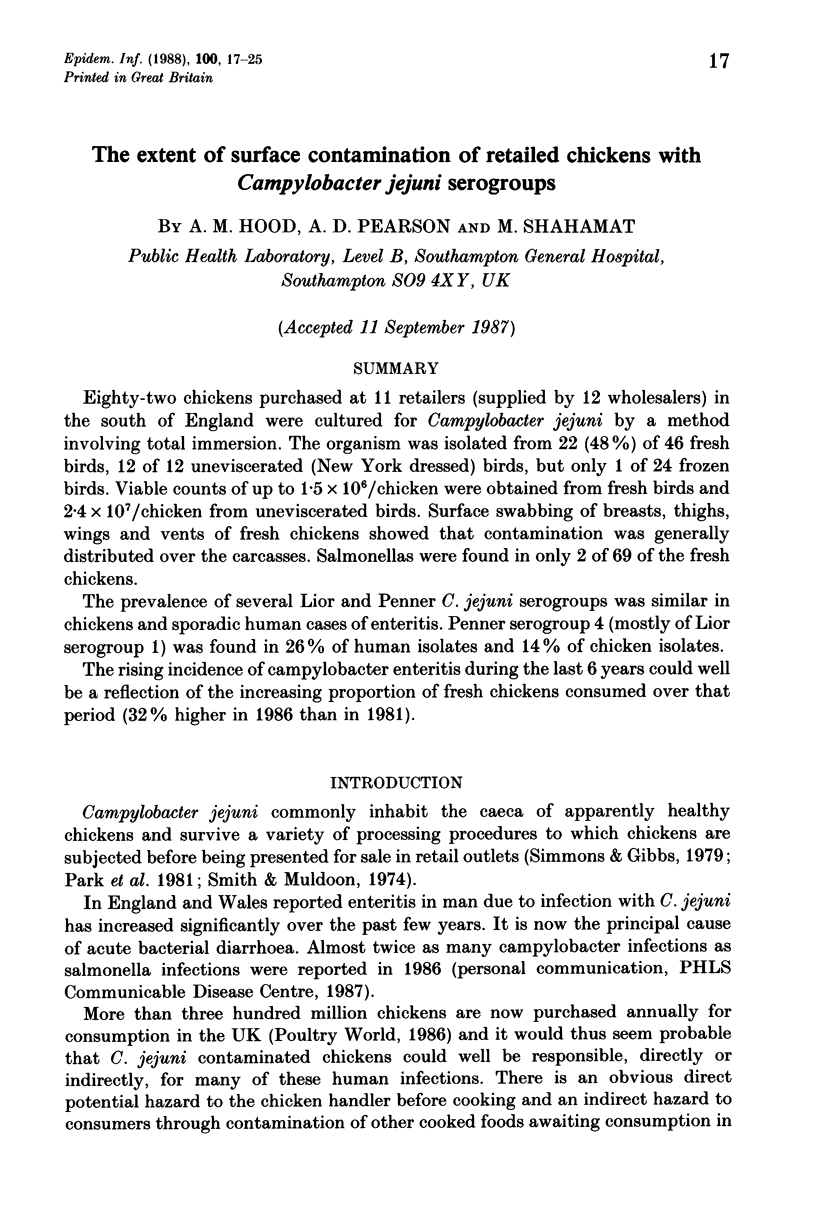
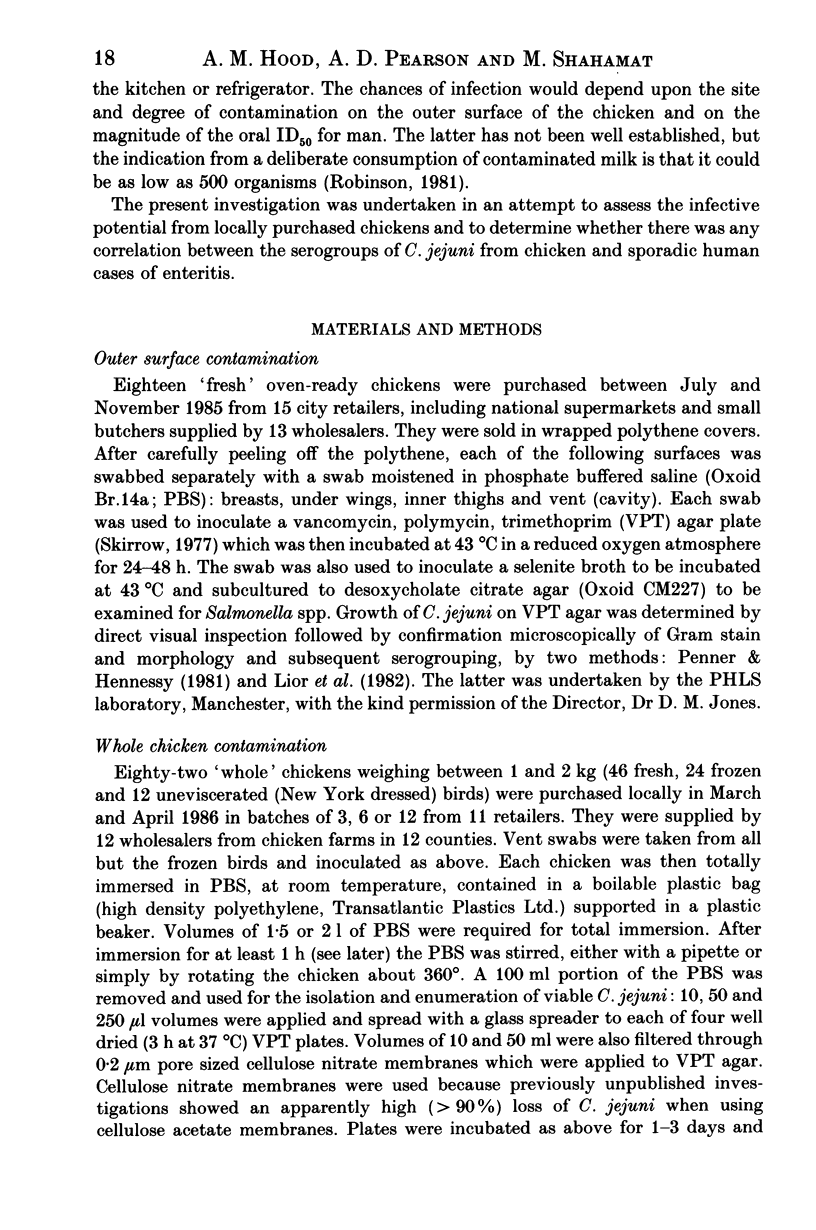
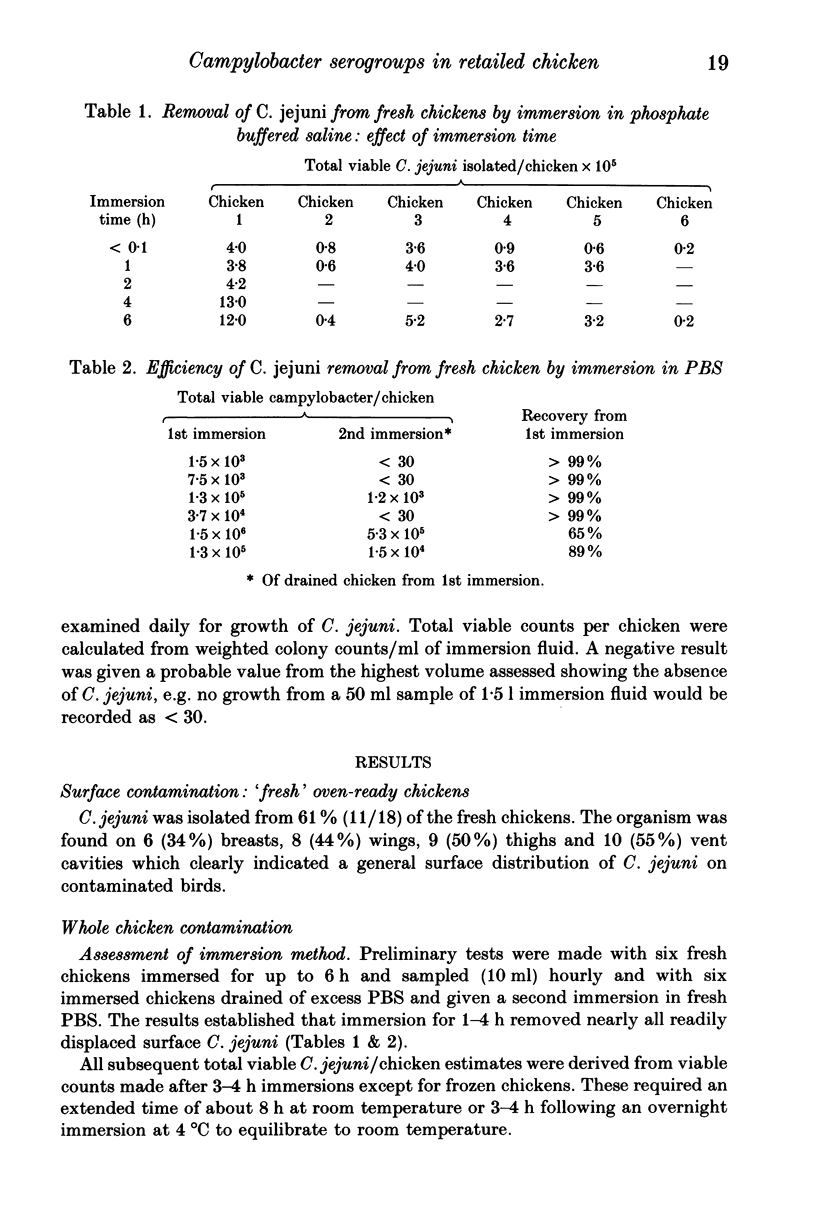

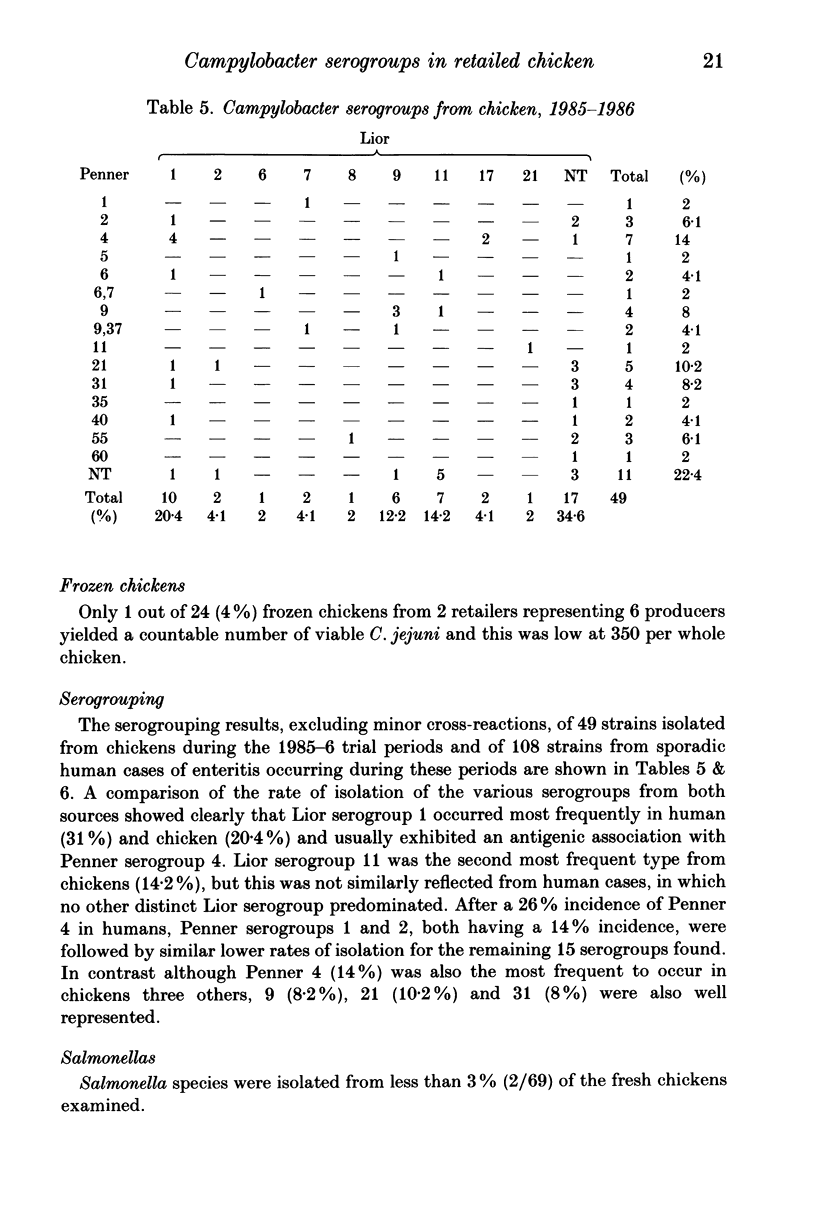
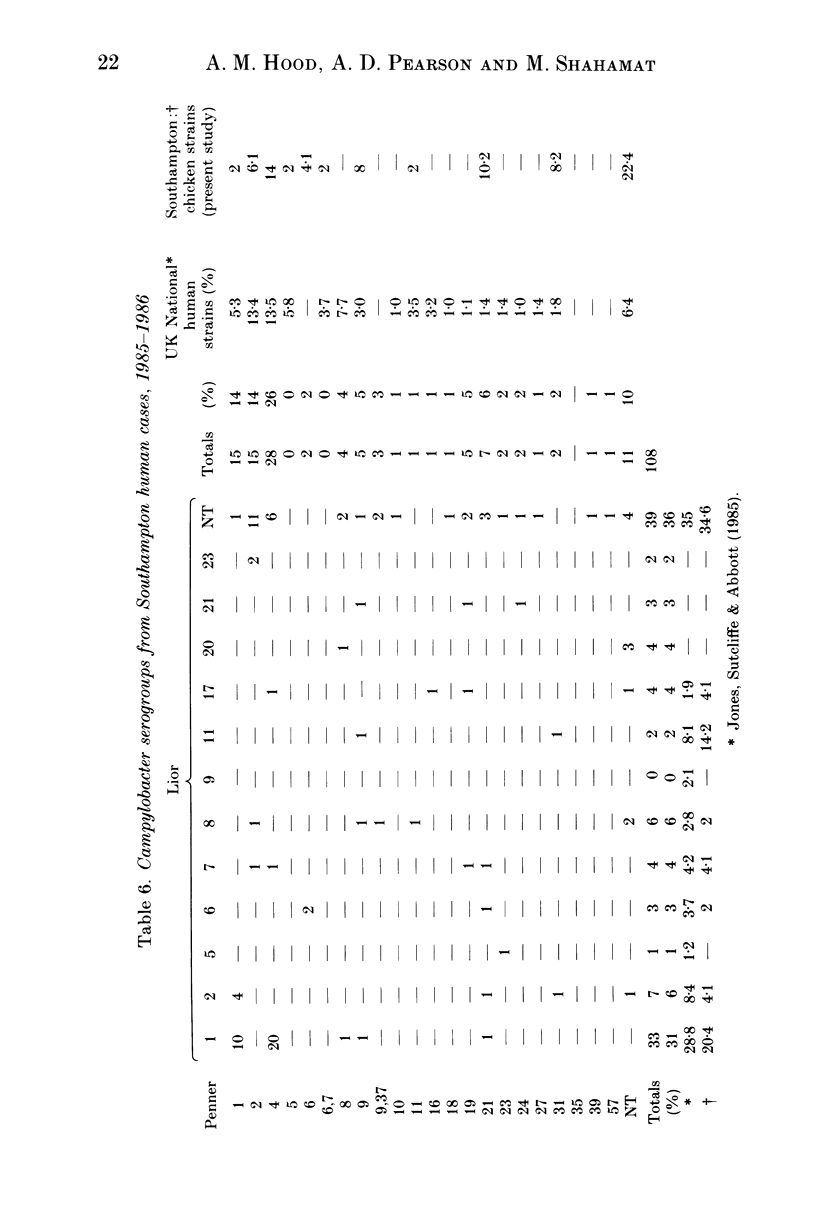
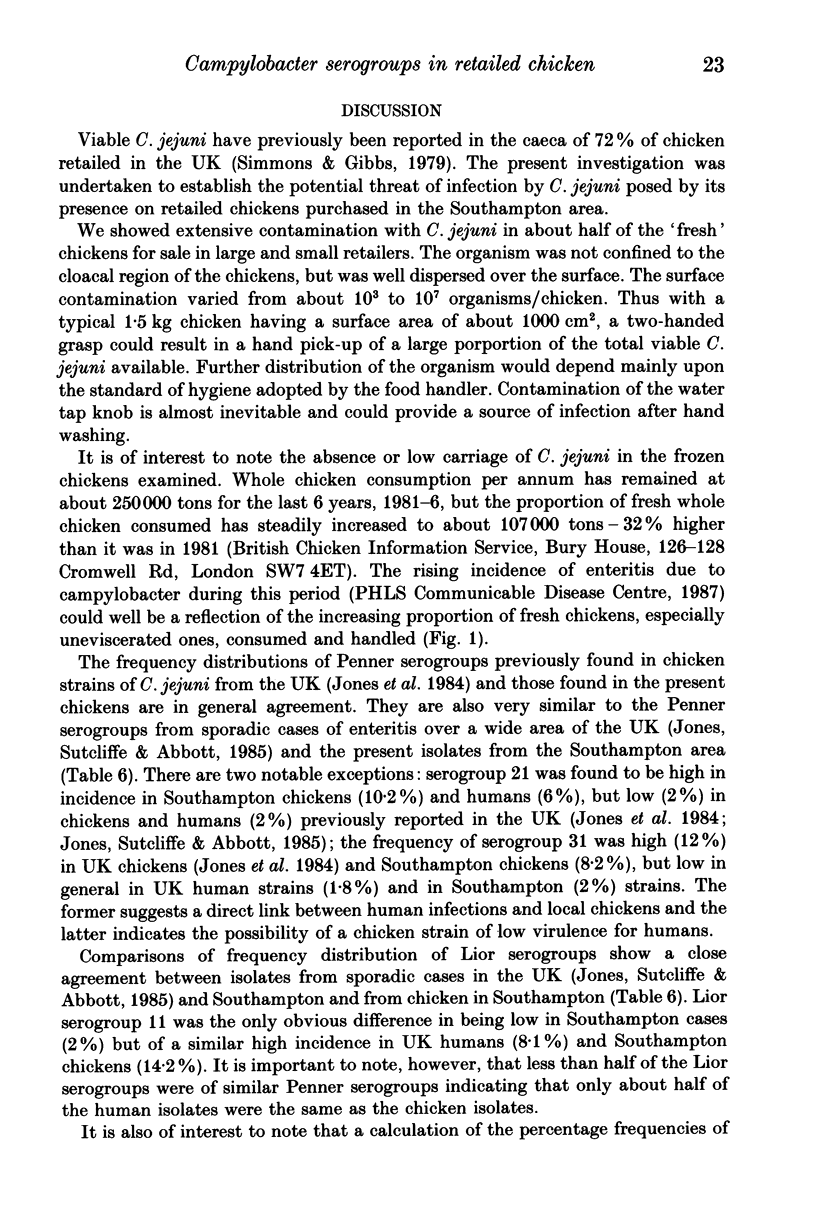
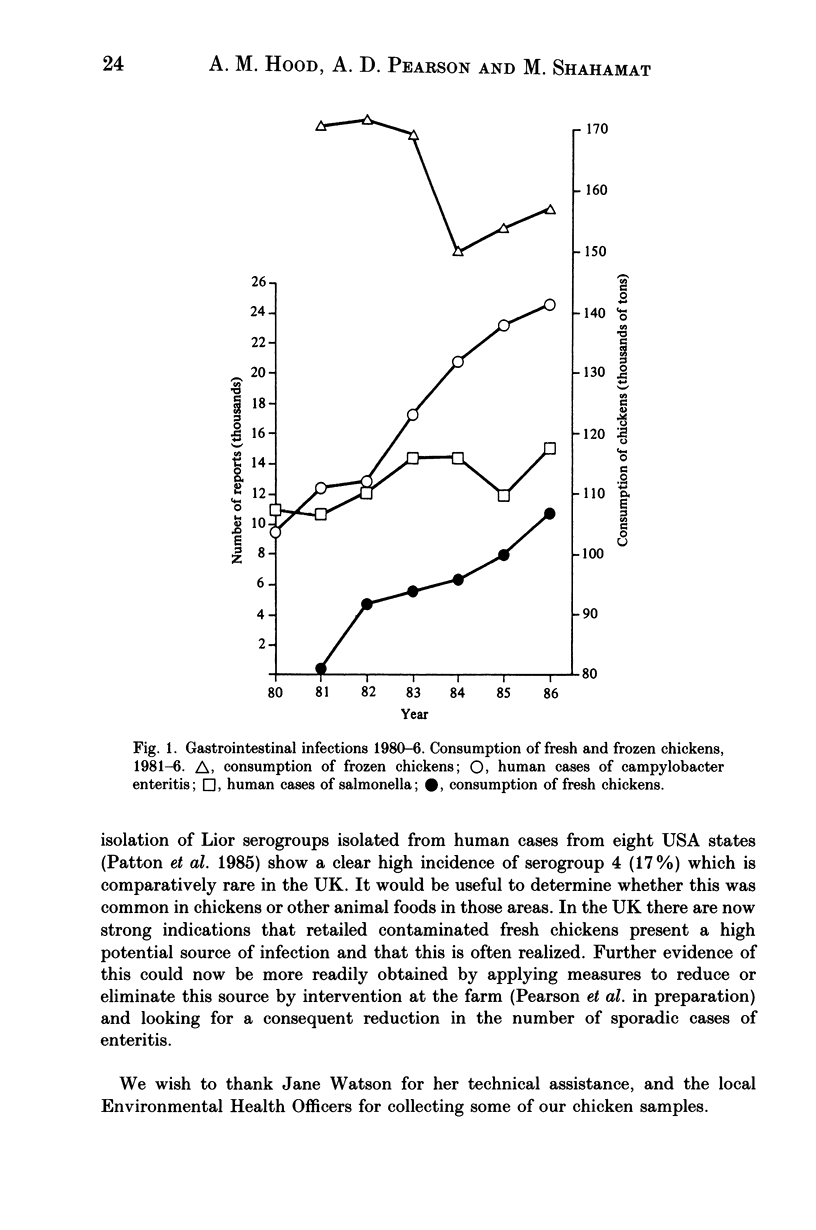
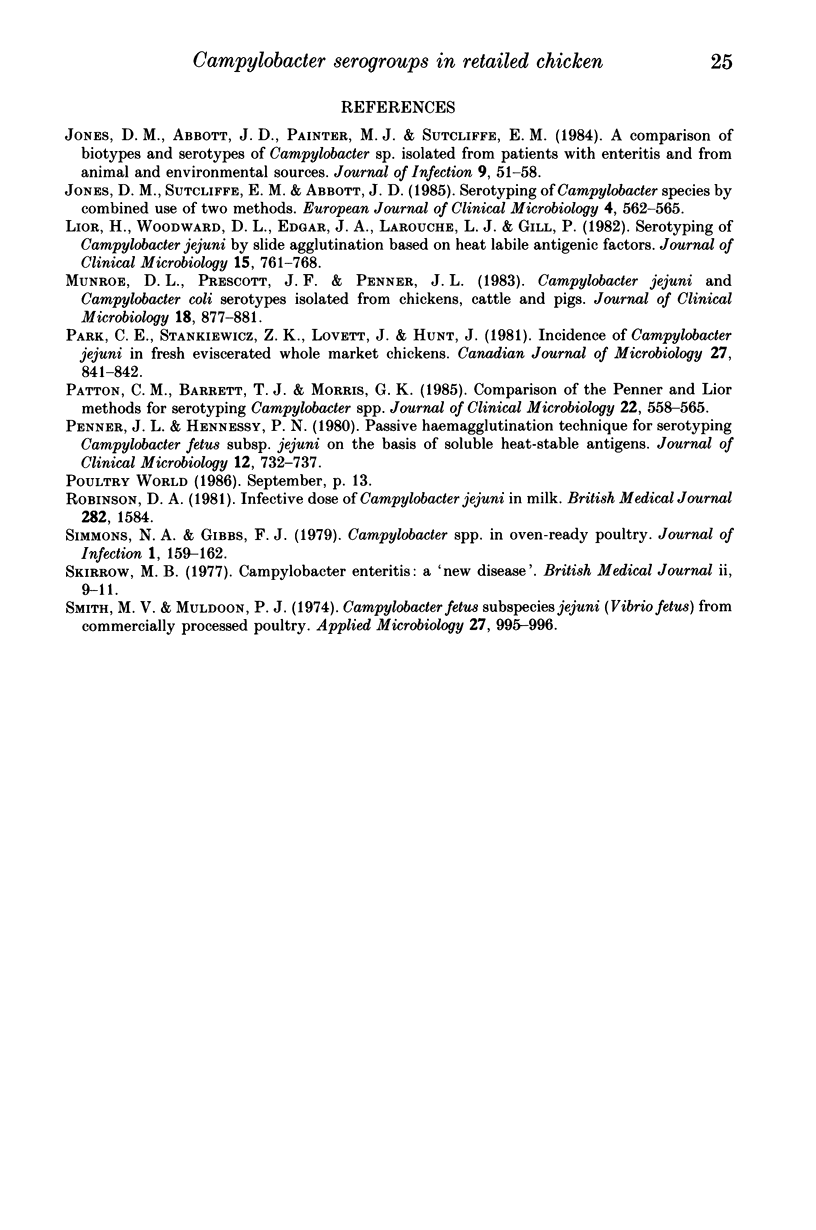
Selected References
These references are in PubMed. This may not be the complete list of references from this article.
- Jones D. M., Abbott J. D., Painter M. J., Sutcliffe E. M. A comparison of biotypes and serotypes of Campylobacter sp. isolated from patients with enteritis and from animal and environmental sources. J Infect. 1984 Jul;9(1):51–58. doi: 10.1016/s0163-4453(84)94498-0. [DOI] [PubMed] [Google Scholar]
- Jones D. M., Sutcliffe E. M., Abbott J. D. Serotyping of Campylobacter species by combined use of two methods. Eur J Clin Microbiol. 1985 Dec;4(6):562–565. doi: 10.1007/BF02013395. [DOI] [PubMed] [Google Scholar]
- Lior H., Woodward D. L., Edgar J. A., Laroche L. J., Gill P. Serotyping of Campylobacter jejuni by slide agglutination based on heat-labile antigenic factors. J Clin Microbiol. 1982 May;15(5):761–768. doi: 10.1128/jcm.15.5.761-768.1982. [DOI] [PMC free article] [PubMed] [Google Scholar]
- Munroe D. L., Prescott J. F., Penner J. L. Campylobacter jejuni and Campylobacter coli serotypes isolated from chickens, cattle, and pigs. J Clin Microbiol. 1983 Oct;18(4):877–881. doi: 10.1128/jcm.18.4.877-881.1983. [DOI] [PMC free article] [PubMed] [Google Scholar]
- Park C. E., Stankiewicz Z. K., Lovett J., Hunt J. Incidence of Campylobacter jejuni in fresh eviscerated whole market chickens. Can J Microbiol. 1981 Aug;27(8):841–842. doi: 10.1139/m81-129. [DOI] [PubMed] [Google Scholar]
- Patton C. M., Barrett T. J., Morris G. K. Comparison of the Penner and Lior methods for serotyping Campylobacter spp. J Clin Microbiol. 1985 Oct;22(4):558–565. doi: 10.1128/jcm.22.4.558-565.1985. [DOI] [PMC free article] [PubMed] [Google Scholar]
- Penner J. L., Hennessy J. N. Passive hemagglutination technique for serotyping Campylobacter fetus subsp. jejuni on the basis of soluble heat-stable antigens. J Clin Microbiol. 1980 Dec;12(6):732–737. doi: 10.1128/jcm.12.6.732-737.1980. [DOI] [PMC free article] [PubMed] [Google Scholar]
- Robinson D. A. Infective dose of Campylobacter jejuni in milk. Br Med J (Clin Res Ed) 1981 May 16;282(6276):1584–1584. doi: 10.1136/bmj.282.6276.1584. [DOI] [PMC free article] [PubMed] [Google Scholar]
- Skirrow M. B. Campylobacter enteritis: a "new" disease. Br Med J. 1977 Jul 2;2(6078):9–11. doi: 10.1136/bmj.2.6078.9. [DOI] [PMC free article] [PubMed] [Google Scholar]
- Smith M. V., 2nd, Muldoon P. J. Campylobacter fetus subspecies jejuni (Vibrio fetus) from commercially processed poultry. Appl Microbiol. 1974 May;27(5):995–996. doi: 10.1128/am.27.5.995-996.1974. [DOI] [PMC free article] [PubMed] [Google Scholar]


